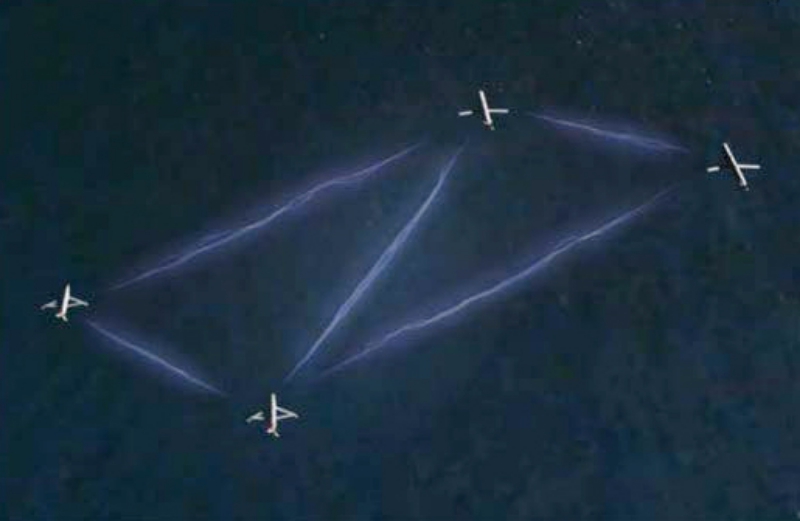US Air Force researchers in October will test whether a software version of the service’s developmental weapons swarm can make its way through a combat mission and reroute itself as conditions change.
The demonstration is part of the Air Force Research Laboratory’s Golden Horde initiative, a high-profile project to create munition swarms that autonomously work together when fired and “think” on their own to attack targets that match criteria given to the software.
Golden Horde assets could be used for traditional airstrikes, or carry sensors and other payloads for missions from reconnaissance to electronic warfare to aerial refuelling.
“We’re actually going to be demonstrating digital twin-enabled operations … where we’ll be using a software variant of a collaborative weapon flying out in a swarm mission, encountering some issues along the way that it did not expect, and collecting that data back over through an [Advanced Battle Management System] cyber-assured cloud, to then feed a digital twin model using some [artificial intelligence and machine learning] techniques to ascertain where we might put either some different playbooks or a software improvement into the weapon system,”
Craig Ewing of AFRL said during a Sept. 21 presentation on digital systems engineering in the Air Force.
Digital twins are virtual models of hardware that can be used in simulations to refine engineering work and speed up development of new military systems without relying as much on physical prototypes. They are a core piece of the Department of the Air Force’s new push to adopt digital engineering more broadly across its inventory.
Golden Horde is one of AFRL’s three fast-tracked “vanguard” programs that receives more attention and resources from across the service because it is so promising.
Program officials will use technology developed for Gray Wolf, an earlier effort to develop a swarming cruise missile, as the model for the demonstration. The Air Force said last year it would abandon Gray Wolf in its early stages of development at Lockheed Martin and Northrop Grumman to focus on networking existing munitions through Golden Horde instead.
The data collected on Gray Wolf will help hone algorithms to ensure Golden Horde, a collection of Collaborative Small Diameter Bombs and Miniature Air-Launched Decoys, works as intended in real life. Scientific Applications and Research Associates and Georgia Tech Applied Research Corp. are networking those weapons together for the Air Force.
Gray Wolf is a potential experiment surrogate for the Golden Horde munitions, Christopher J. Ristich, head of AFRL’s Strategic Development Planning and Experimentation office, said Sept. 16.
“We’re looking at a whole variety of things, from small [unmanned aerial vehicle] systems to explore the behaviours of these collaborative weapons, up to actual surrogates for the weapons themselves,” he said.
While the AFRL website notes that demos will begin late this year and “ultimately lead to an integrated capstone test event with … weapons working together to prosecute simulated targets in the fall of 2021,” Ristich said officials are rethinking aspects of the program as well as the schedule.
Defense News reported earlier this year that F-16 fighter jets would flight-test the CSDB-1 in 2020, followed by tests of the CMALD on the B-52 bomber next summer.
“The first flight test scenarios will be simple, helping the Air Force gauge whether the weapons are properly communicating across the network and acting in accordance with the mission playbook,” Defense News wrote. “For example, a team of CSDB-1s could come across a threat while en route to attack a target and would have to change trajectory to avoid it.”
The Air Force may vet the concept as an integrated swarm in 2022.
Source: Air Force Magazine

